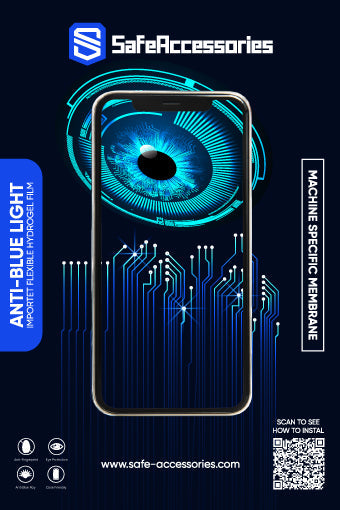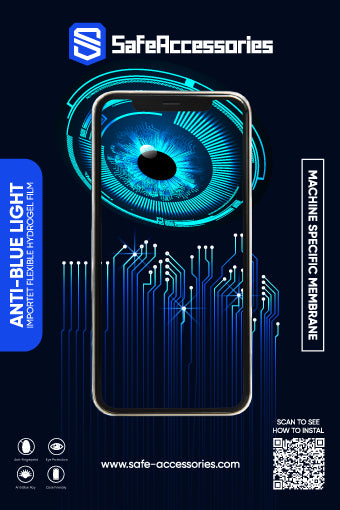Who’s Right? Challenging the WHO’s Recent Meta-Analysis on EMF Radiation from Cell Phones and Cancer Risks
Condividere
As we continue to live in a world powered by mobile technology, concerns around the safety of electromagnetic field (EMF) radiation from cell phones remain a hot topic. On September 3, 2024, the World Health Organization (WHO) released a new meta-analysis that claims EMF radiation, particularly from cell phones, does not significantly increase the risk of cancer. This report challenges the WHO’s earlier 2011 findings, which labeled radiofrequency (RF) radiation as "possibly carcinogenic," citing an increased risk for glioma, a type of brain cancer.

However, just one day later, a Canadian study surfaced, offering a contrasting view. It claims that regular mobile phone users face a higher incidence of cardiovascular disease compared to non-users. This divergence of findings raises an important question: Who is right?
In this post, we’ll delve into the WHO’s latest meta-analysis, examine its limitations, and consider the broader implications for public health.
What the WHO’s Meta-Analysis Found
The WHO study, titled “The effect of exposure to radiofrequency fields on cancer risk in the general and working population,” reviewed over 5,000 studies, narrowing its focus to 63 selected for analysis. The primary aim was to determine whether exposure to RF-EMF from cell phones and other sources was causally linked to cancer, specifically brain cancer and childhood cancer.
Key findings include:
- Mobile phone use likely does not increase the risk of brain cancer.
- RF radiation from broadcasting antennas or base stations is unlikely to increase childhood cancer risk.
- Occupational RF exposure may not significantly elevate the risk of brain cancer.
Concerns with the WHO Meta-Analysis
At first glance, these conclusions seem reassuring. However, as an expert in EMF radiation, I found several troubling aspects of the study.
1. Hand-Picking of Studies
Out of 5,000 studies, only 63 were used in the final analysis. This narrow selection process raises questions about bias. Most of the studies they chose were other meta-analyses, which can dilute the presence of high-quality, statistically significant data. Additionally, the study largely overlooked epidemiological research suggesting a possible link between cell phone radiation and cancer.
2. Exclusion of Landmark Studies
One glaring omission is the failure to include the 2018 National Toxicology Program (NTP) study, which found a significant association between RF radiation and the development of tumors in male rats, particularly in the adrenal glands, hearts, and brains. This study has been pivotal in the conversation around EMF and cancer, making its exclusion highly suspect.
3. Misleading Comparisons with Other RF Sources
The WHO study compared 5G radiation to radar frequencies (30-300 MHz), suggesting that they are harmless. However, the frequency range of 5G goes up to 300 GHz, vastly higher than radar frequencies. This comparison seems irrelevant and misleading.
4. Dismissing Relevant Research Due to "Recall Bias"
The study ignored previous research that examined which side of the head people held their phones, claiming potential "recall bias." Yet, discounting such data without presenting alternative methods for measuring long-term exposure feels like an intentional oversight.
5. Influence of Industry Funding
Another concern is the potential conflict of interest. One of the lead researchers in the meta-analysis has direct ties to the WHO, and it’s no secret that industry-funded studies tend to favor the "no risk" conclusion. Independent studies, on the other hand, consistently show a stronger correlation between RF-EMF exposure and adverse health effects. For example, a review by Dr. Jeffrey Fawcett found that 68% of independently funded studies identified an RF-EMF effect, compared to only 27% of industry-funded studies.
Taking a Step Back: What This Means for You
The WHO meta-analysis presents no new data—it merely reviews existing studies, many of which already lean toward a no-risk conclusion. This report has fueled headlines downplaying the risks of EMF radiation, but the truth is, many questions remain unanswered. The media's generalization that EMF radiation is entirely safe based on this report ignores a broader body of evidence that suggests caution is still necessary.
What does this mean for you as a consumer? While the debate continues, it’s essential to stay informed and take personal steps to protect yourself from potential risks.
Practical Steps for EMF Protection:
- Limit Your Exposure: Keep your cell phone away from your body when not in use. Use speakerphone or wired headphones during calls.
- Use EMF Shielding Products: Consider products like EMF shielding phone cases, protective gloves, or Faraday pouches to minimize direct exposure to EMF radiation.
- Be Mindful of Children’s Use: Children are more vulnerable to EMF radiation due to their developing brains and thinner skulls. Limit their screen time and exposure to wireless devices.
Conclusion: Who’s Right?
The WHO’s meta-analysis and the broader conversation about EMF radiation and cancer are part of a complex and ongoing debate. While the recent WHO report suggests minimal cancer risk, it’s essential to remember that conflicting studies, like the Canadian research on cardiovascular disease, point to potential health concerns beyond cancer.
Until more conclusive, unbiased research is available, it’s wise to remain cautious about prolonged exposure to EMF radiation. At Safe Accessories, we advocate for continued vigilance and practical solutions to reduce your exposure to potentially harmful radiation. Whether through the use of shielding products or adopting safer mobile habits, you can take control of your health in the face of uncertain science.
For more information on our EMF shielding products and how you can protect yourself, visit Safe Accessories today.
Stay safe, stay informed.
References:
- World Health Organization (2024). Meta-analysis on RF-EMF and Cancer.
- National Toxicology Program (2018). RF Radiation and Tumor Growth in Rats.
- Fawcett, J. PhD. (2023). Independent vs Industry-Funded EMF Studies.


